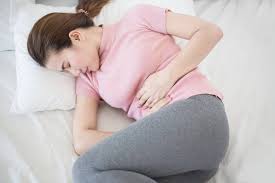Source: northerndailyleader.com.au
Q: I’ve had pelvic pain for a few months. Could it be endometriosis?
A: Endometriosis is a disease where the lining of the uterus, referred to as the endometrium, is found outside the uterus mainly in the pelvis.
Typically the symptoms of endometriosis can range from being very mild to quite severe. The disease is also associated with adhesions and large cysts on the ovaries called endometrioma or commonly referred to as chocolate cysts.
The condition can range from being asymptomatic (without symptoms), and the patient presents with a history of infertility for example, to causing severe symptoms affecting quality of life.
Common symptoms include painful periods, pelvic pain during or immediately following vaginal intercourse, bladder pain, ovulation pain (mid-cycle pain), pain with defecation and infertility (classified as trying to conceive for 12 months or more without success in a woman less than 35 years old).
Between 10 to 15 per cent of women in Australia are affected by endometriosis. Of these, almost 40 per cent will have difficulties conceiving.
The most common symptoms are painful periods during which women affected usually need to take strong pain relief and time off work. Paracetamol or a non-steroidal anti-inflammatory (NSAID) can be useful, but they won’t fix the condition.
The diagnosis of endometriosis can sometimes be challenging. This would explain the long time to diagnosis and why doctors and other health care providers need to have a high index of suspicion for endometriosis especially in the context of a woman presenting with a long-standing history of painful periods.
In the first instance the doctor rules out other possible causes to the pain, following which a pelvic ultrasound scan is arranged. Ultimately endometriosis is both diagnosed and treated at the time of laparoscopy (key-hole surgery). By excising the endometriosis, we improve the patient’s symptom’s and their fertility.
Medical management has a key role in endometriosis. The mainstay is the oral contraceptive pill which stops a woman from ovulating and reducing the production of estrogen.
A multidisciplinary approach is often required to fully manage a patient with endometriosis. A pelvic physiotherapist can alleviate the pain and sometimes a pain management unit is required to control the chronic pain.
What is the outlook for life with endometriosis?
The combination of surgical and medical management has a very good success rate in alleviating pain and improving fertility.
Unfortunately, many women with moderate to severe endometriosis will need surgery within the following years (of the initial laparoscopy) – about 20 per cent within two years, and 50 per cent within five years. Women with moderate to severe endometriosis often requires multiple surgeries within their lifetime.
Endometriosis typically affects women in their reproductive years, but it can resolve later in life. When a woman goes through menopause, endometriosis can settle down because the ovaries are no longer producing estrogen.
If you have mild or no symptoms, there is no need to perform laparoscopy and treat endometriosis. Treatment is warranted if your symptoms are affecting your quality of life or you are trying to conceive but have been unsuccessful.
Sometimes women have endometriosis without knowing it. In this case, treatment is not required. If it’s not causing you issues, you don’t need to investigate for it or treat it.
Today’s answer is provided by Brisbane obstetrician and gynaecologist Dr Joseph Jabbour, through HealthShare, a digital company dedicated to improving the health of regional Australians. Submit questions, and find more answers, at healthshare.com.au.
You can find a specialist near you using the health tool below.
